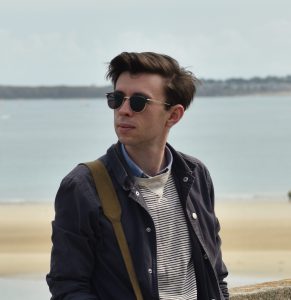A review of the exhibitions at Tate Modern & The Estorick Collection, originally published for subscribers on my Substack: morganhaigh.substack.com/
Travelling through a still, dead, January landscape to a wintery London to be met with the lively, cicada-filled warmth that radiates from the canvases of Paul Cézanne is a restorative experience. Whilst the country lies in its dormant state, still and unchanging, there is a deep joy to be found in surrounding oneself with the fluttering, flicking leaves, the sultry mistral breezes, and the quiet lapping of diminutive Mediterranean waves that Cézanne mastered in his late age. The Art Institute of Chicago had this large retrospective last year before the works were shipped to the Tate Modern where they currently constitute the winter ‘blockbuster show’ but, whilst my first intention was the review and record this major exhibition, it was a much smaller, quieter show that I saw a day later which brought a certain clarity to the particular way of seeing both artists explore.
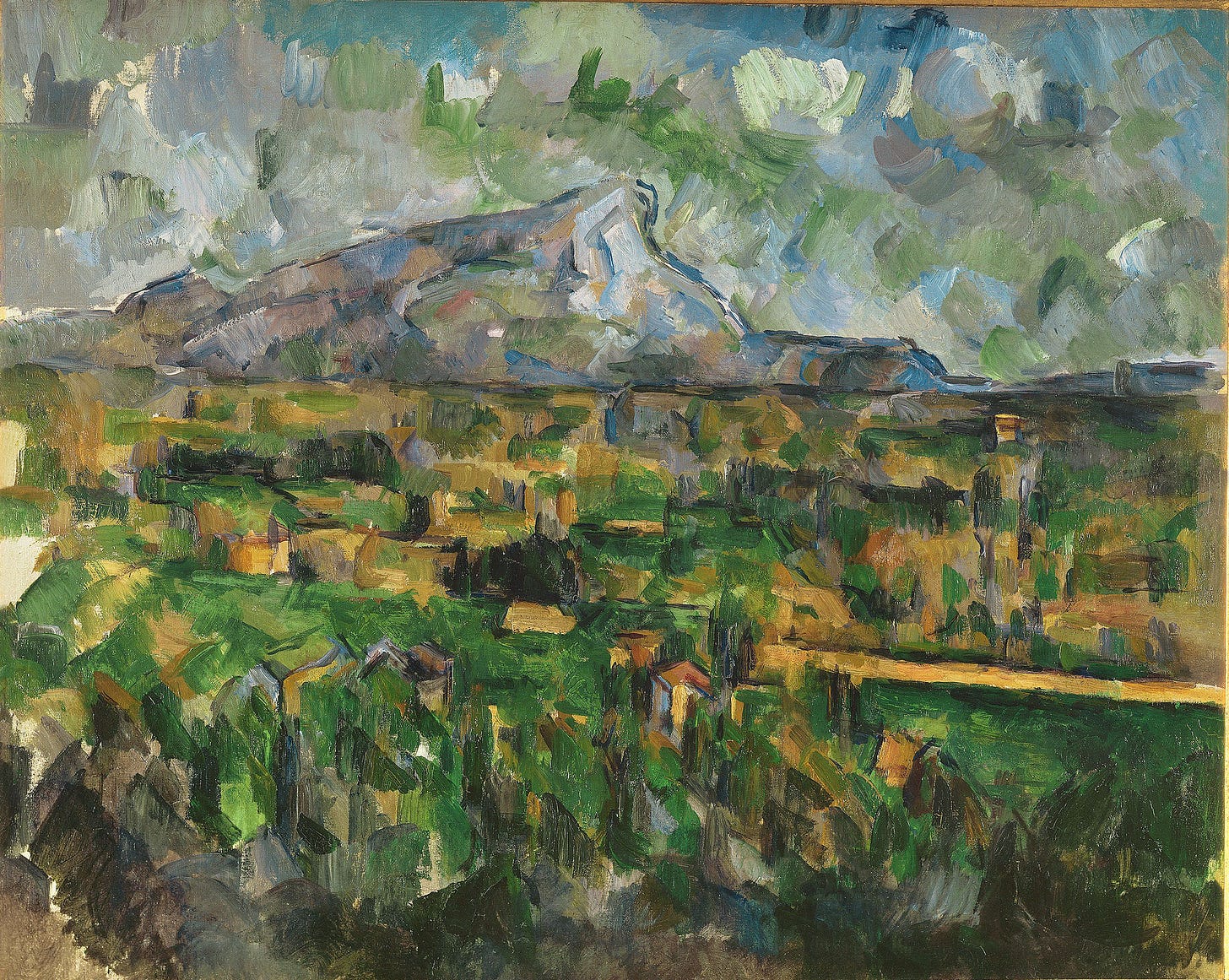
Giorgio Morandi was almost as reclusive as Cézanne, born in Bologna in 1890 and spending all his 73 years living there with two elder sisters. Unlike Cézanne, however, he is an artist often missed from the sweeping narratives of art history, on the edge of a number of important movements of Italian modernism – Futurism, Pittura Metafisica, Novecento Italiano – but never a major player, he is without the boisterous rhetoric of Marinetti, the proto-surrealism of de Chirico, or the hyperbolic spectacle of Mussolini’s pet artists. Both Morandi and Cézanne are quiet painters, their paintings never shout but enunciate clearly and subtly a radically different way of thinking about making images.
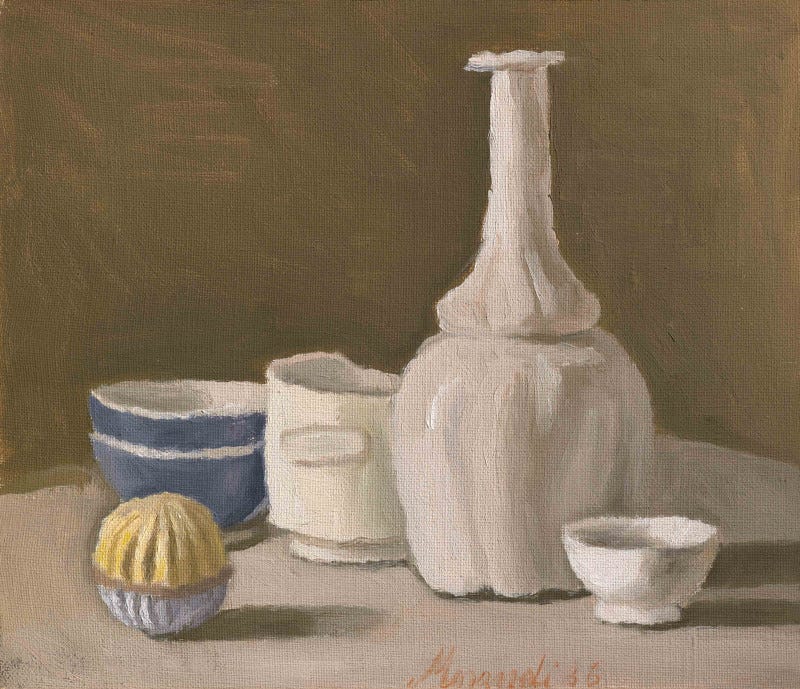
I don’t wish to repeat myself in this brief review as I have previously written about ‘heroic doubt’ in the works of Cézanne, about his pleasure in including in his paintings the process of observation and the inherent limits of the apparatus of eye and brain. For him, to be sure of form, colour, space, or position is a struggle and, by rendering this doubt, a fundamental part of being human, onto timeless canvases, Cézanne elevates this condition to a heroic level. His works, especially those after 1900, record the everlasting conflict between the constantly shifting, changing world and our heroic, but ultimately flawed, efforts to perceive it. You kind find that essay here.
The current show at Tate Modern shows this off nicely, with sets of landscapes, still lives, and the occasional portrait displayed in generally thematic groups allowing one to stand in the middle of the space and take in one man’s career-long efforts to pin down what he thought he saw. Putting this little distance between yourself and the works can help to unlock that ambiguity, a horizontal line at the bottom of the landscape shifts from being the pitch of an unseen rooftop in the mid-distance to the edge of a low wall in the foreground, the amorphous grey square might be the roof’s chimney pot, or the side of a house in the middle distance, these movements of scale and position change with every blink and keep these paintings alive a hundred and twenty years later.
It is moments like this, and other reminders of Cézanne’s brilliance (the deep Prussian blue outlines to his fruits that give them such gravitas and weight), that make the show worth seeing, this is despite the continuing efforts of the Tate curators to get in between you and the works in distracting and unhelpful ways. The least of their sins are the wall colours, an improvement of the bizarre choices in the Walter Sickert exhibition last year (reviewed here), most of the rooms are coated in subtle tones that compliment the works nicely, although there is the occasional draining deep purple that sucks all the life out of the canvas. No, the real issue here is the impetus behind the curation. One could walk around this show, reading none of the wall texts, simply taking it as a traditional retrospective, ‘an excuse to get the nice Cézannes out’ as a friend of mine put it. It works rather well in that capacity, but unfortunately, Tate has decided the show must have some kind of structured ‘argument’ and so, they state proudly in the introduction, the first half of the exhibition will be dedicated to explaining who Cézanne was, with the second half being the aforementioned thematic display of his works. This would do better as a catalogue essay and not the sparsely hung series of confused small rooms that greets the visitor, the odd early work positioned randomly in a biography that suddenly runs out of steam when the artist hits middle age. If you wanted this show to really tell you the life story of Cézanne you’d come out of it none the wiser.
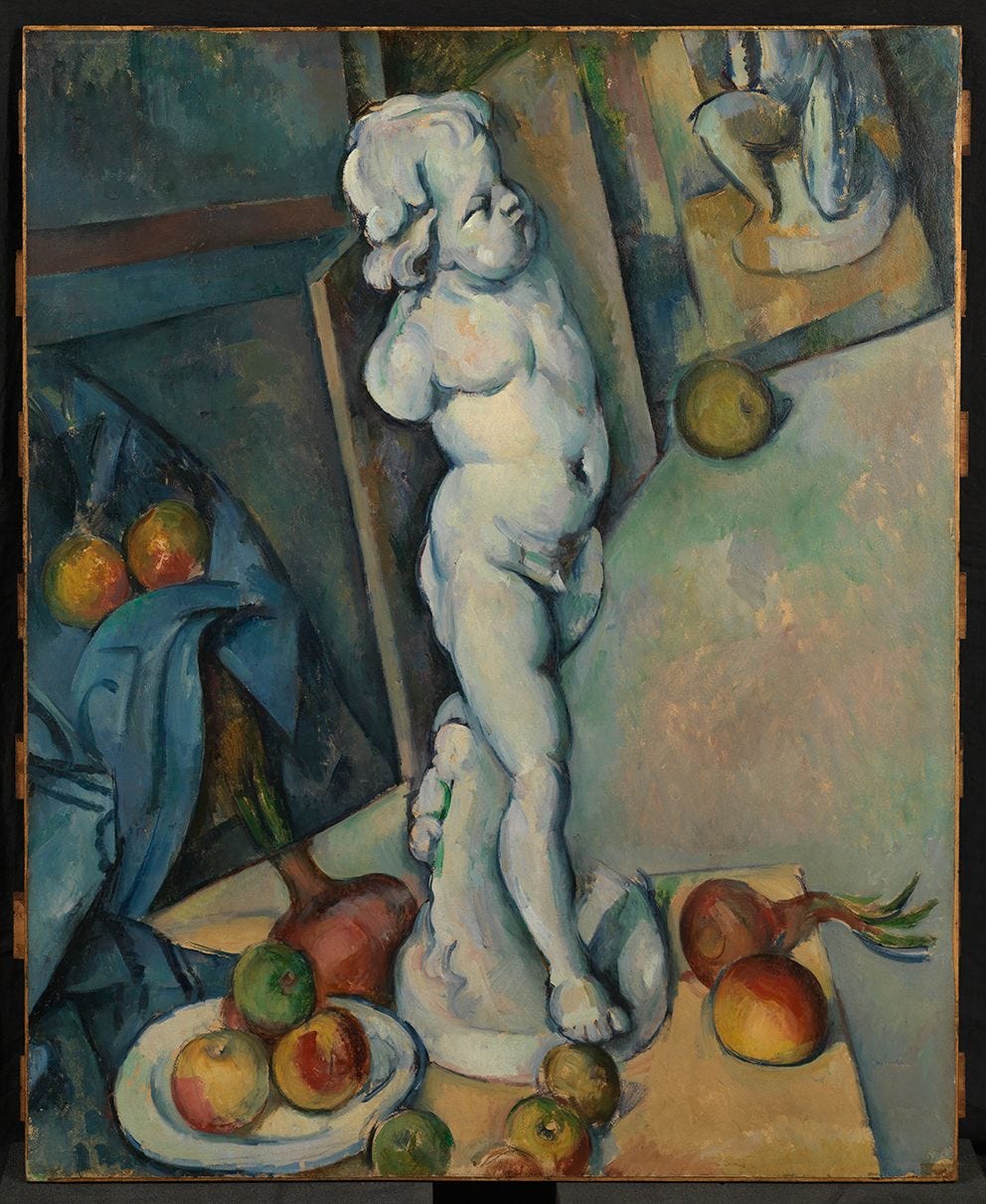
At the risking sounding like a pedant, the most frustrating decision the curators have made with the styling of the exhibition represents a certain trendiness that is unnecessarily patronising. ‘Cezanne’, in Tate’s favoured children’s television sans-serif font is plastered all over the poster. Note the absent accent on the first ‘e’. The curators’ justification for this misspelling is that Cézanne himself often signed off correspondences and sketches without the accent. They seem to think that this was some grand egalitarian gesture, that Cézanne was negating the pomposity of having an accent in his name. Something which, whilst granted often the preserve of the upper classes in the anglosphere, is as ordinary as onion soup in France. A simple act of causal laziness on the behalf of the artist has been adapted by Tate to their own ends. They claim that by spelling his name wrong on all the wall texts they have made the artist more ‘accessible’ and less ‘elitist’…
Famously, Cézanne threatened, “with an apple, I will astonish Paris” and his sill-lives (nature morte in French) are some of his most enduring works. He would arrange these apples, pears, and oranges in his studio and paint the same group for weeks, perfecting the tones and textures, until the fruit was well and truly rotted in the Provencal heat. His obsessiveness paid dividends, his apples being some of the most solid and believable objects in all of western art. Their only rival might just be the monochrome pots and bottles in the paintings of Georgio Morandi, the largest ever group of which on public display in the UK is currently at the Estorick Collection in Islington, London.
Hidden away in a Georgian townhouse on a residential square, for 25 years the Estorick has been the home of modern Italian art in London. Stylishly decked out with a cafe serving aperitivo and a staff of painfully cool young Italians, its excellent exhibitions are a firm favourite of those in the know. The entire collection of around 50 paintings and works on paper, belonging to Italy’s Magnani-Rocca Foundation, and collected personally from Morandi by Senior Magnani himself, are on show for the first time in the UK. They show a Morandi who was not only in the current of his own time but deeply indebted to forebears both recent and ancient – he taught himself etching from a Dutch artists’ manual from the 1660s.
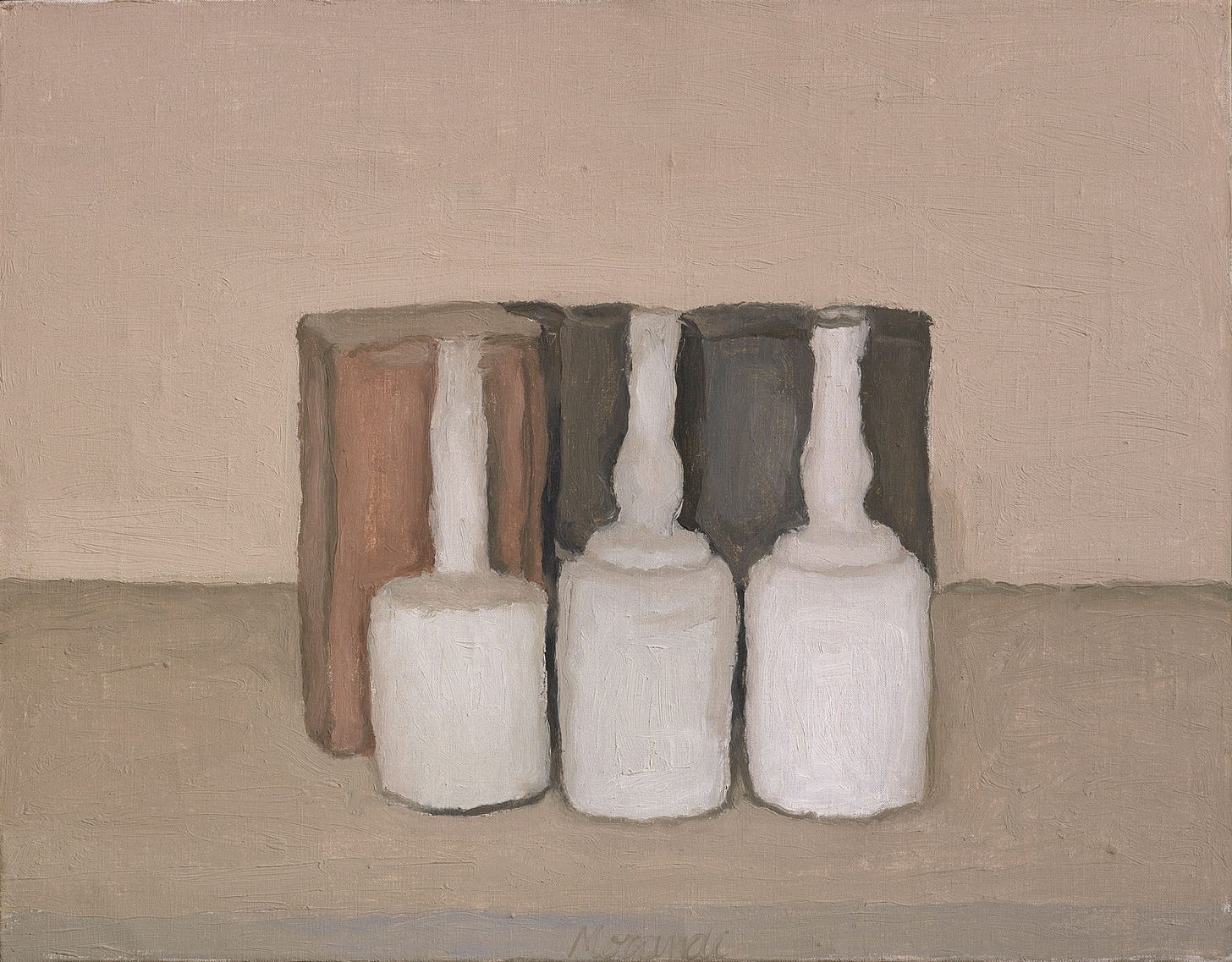
For many, Morandi is the man who painted bottles, and indeed most of his best works fall into the category of his unvaryingly simple still lives. Never very large, these works usually consist of two shades of beige meeting at a midpoint and producing the effect of a shelf or ledge and, on top, displayed carefully but irregularly and from a just slightly ariel viewpoint, a handful of bottles, jugs, bots, vases in neutral colours without patterns. Possibly the most boring description of an artwork imaginable, and yet, these little contemplative paintings have an aura about them, an undefinable mystery, that makes them endlessly compelling. Morandi manages to make images just as intriguing and unearthly as the abstract works of the period but using nothing more than you’d find in an average Italian dresser. But as the man himself said, “there is nothing more surreal, nothing more abstract, than reality”.
Nominally, he is a metaphysical painter, a movement that foreran the surrealists and is traditionally illustrated in the textbooks with the works of Georgio de Chirico. Strange dream-like cityscapes in which inanimate objects like mannequins, statues, children’s toys, or fragments of classical sculpture take on the attributes of human forms and feelings. However, whilst de Chirico’s works shouted about their strangeness with lurid colours and destabilised perspectives, Morandi’s are subtle, sensitive, and enveloping in their enigma.
He catches you on a hook, surely there is something more to these paintings than just bottles, you say to yourself. So you look harder, the little work drags you in, you start to notice the texture of the thick, chalky paint, you start to become aware of the three-dimensionality of each jug, you start to realise that none of the lines, in what first seemed a very formal image are, in fact, straight. Everything wobbles on the edge of solidity with a mirage-like quality, enhanced by the limited colour palette, you become aware that everything in the world of these paintings is made from the same turbulent plasma. They are works which are at once calming and unsettling, this tension making their mystery hugely rewarding to look at.
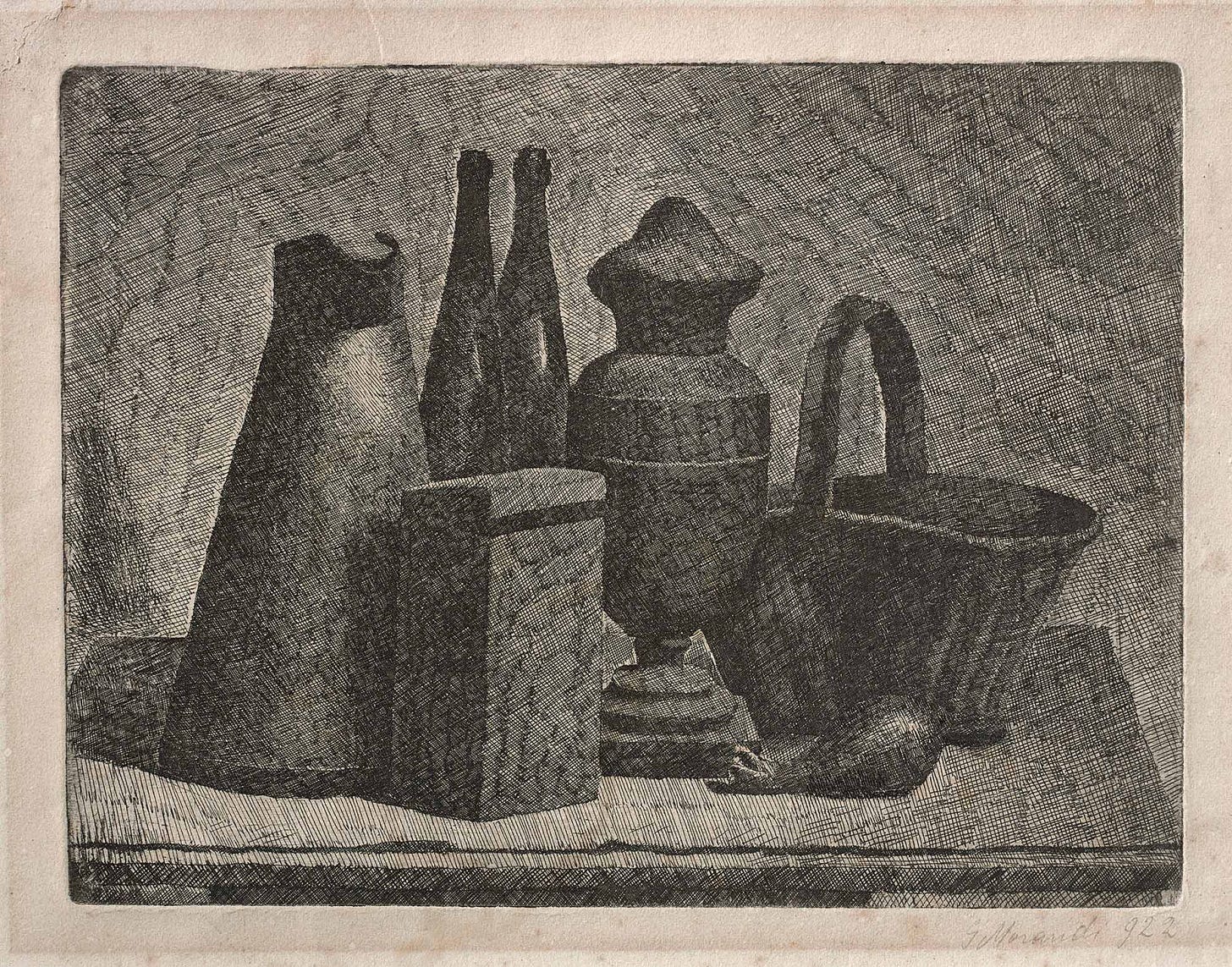
This is where Cézanne and Morandi come together. Despite the obvious inspiration coming from the former to the latter, as represented in the show by a number of fascinating landscape sketches and etchings that could have been taken straight out of Cézanne’s sketchbooks, both artists’ interest in still-life as a genre and how they made these works anything but ‘still’ (less Nature Morte, more Nature Vivante) gives a wonderful flavour of a time when, in both art and science, the doors of perception were being more closely examined and at times pushed further open. Doubt is everywhere. Doubts about the positions of apples or bottles, about where the edges of objects lie and where the next solid begins, and about how, or if, one can attempt to render the three-dimensional world on a two-dimensional canvas. Articulating the precise wonder of either of these artists is extremely difficult, they achieve what all great visual art ought to strive for; a language beyond words. Nonetheless, I would like to write more on Morandi in future, so watch this space.
The curators as the Estorick could really show those at the Tate how it’s done. The small private gallery with a fraction of the resources of Tate Modern has produced a series of informative, well-composed, unobtrusive, and in moments downright poetic exhibition texts. They contain the basic need-to-know information uncoloured by trendy art-speak themes or any crowbarring in of contemporary themes. There are interesting and informative anecdotes, the odd quote from the artist and contemporary critics, as well as some illuminating texts about the collector and the relationship between artist and buyer – something often left in the background.
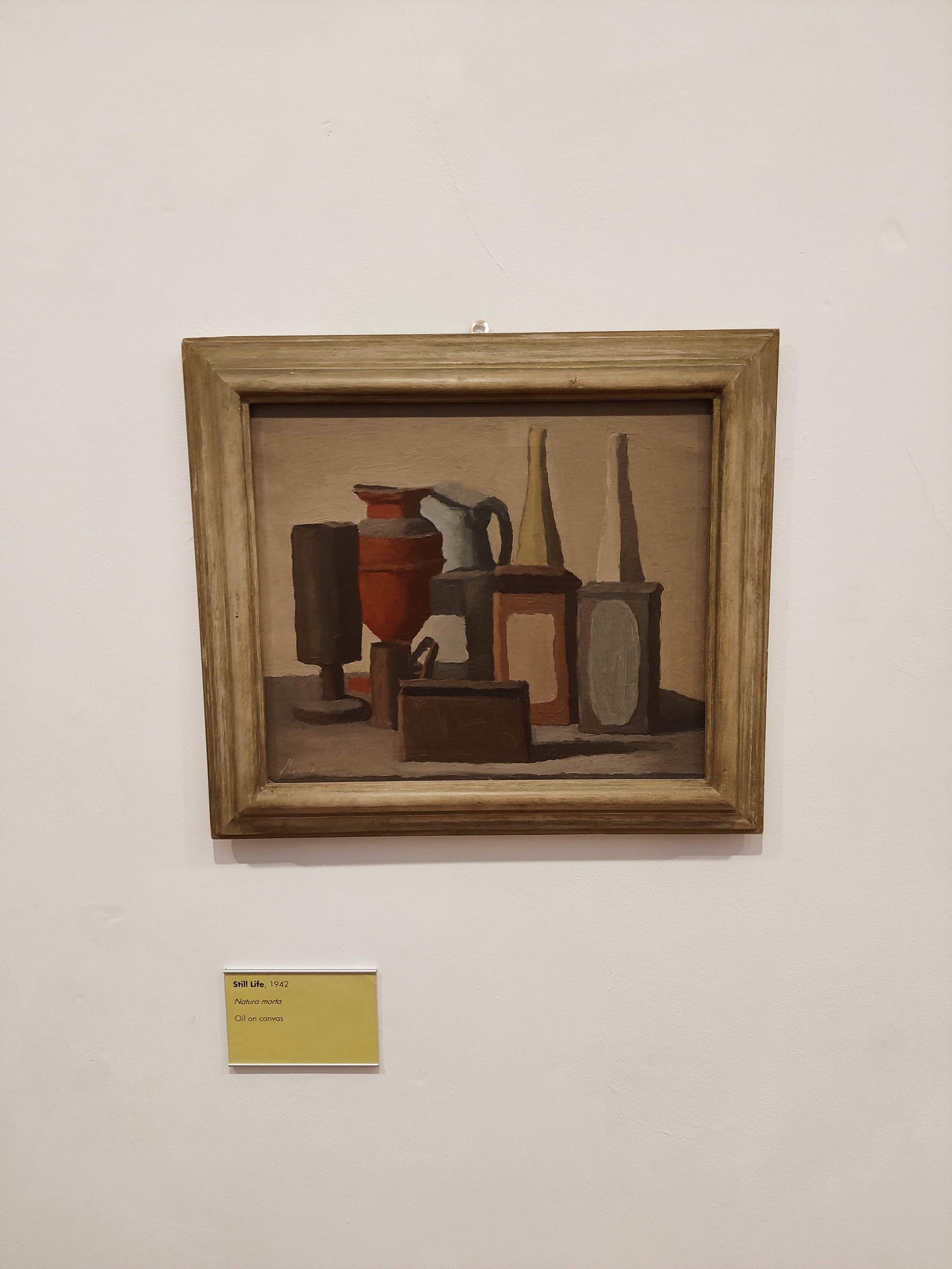
Both shows are strong when it comes to works on paper. The majority of the Morandi exhibition is made up of etchings and pencil sketches, perfectly paired to contrast the richness of his Rembrandtesque etching style with his extremely sparse and precociously talented pencil lines. At the Tate there are a handful of Cézanne’s wonderful watercolours, which often feature a cerise red tone entirely absent from his oil paintings, but the most charming exhibit is a sketchbook from his trips to the Mediterranean coast. It lies open on a double page, one side showing a minimal but clear landscape sketch by Cézanne, the other a naively scribbled, but nonetheless coherent, drawing of a house and some trees by his toddler son, Paul. A touchscreen alongside allows you to digitally flick through the other pages to discover, amongst shopping lists and meal plans, more drawings by father and son on the same page. Cézanne senior provides the waves and junior the little ships and yachts, a valley by the father and a chuffing steam engine by the son.
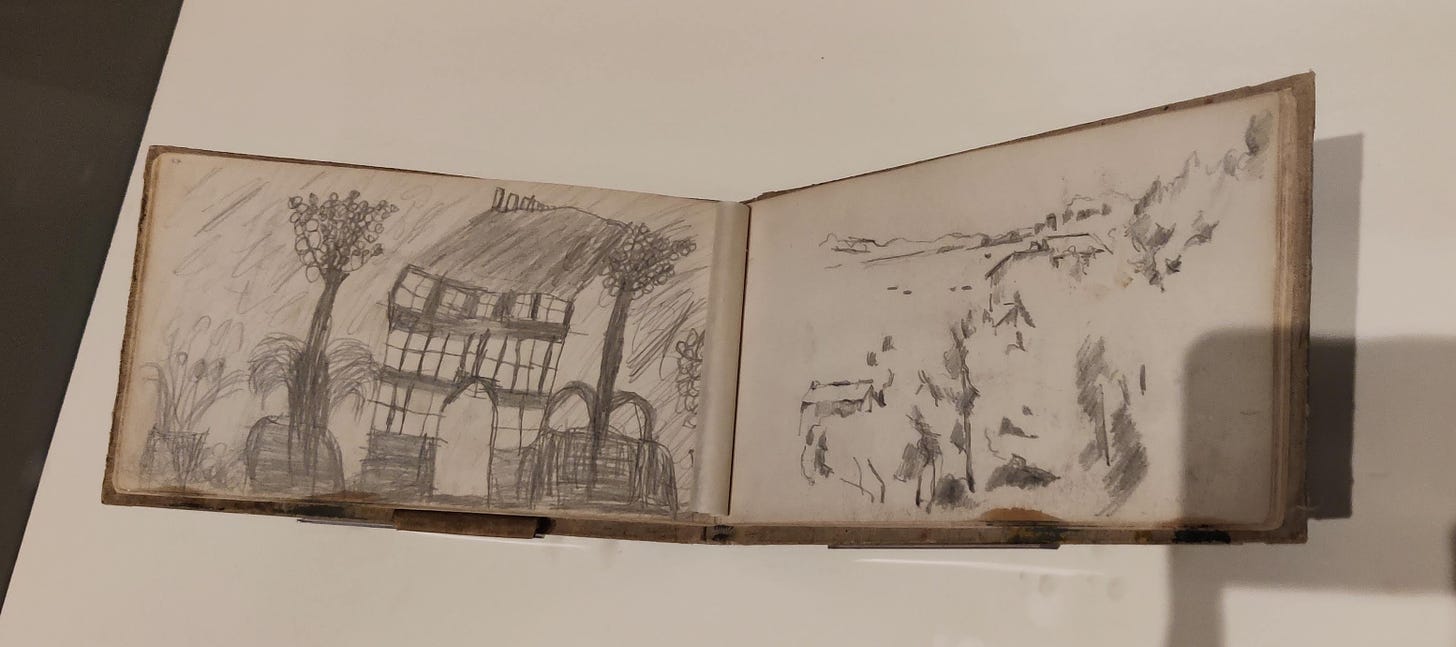
My original intention was to review these two shows separately but, in hindsight, I found the complementary nature of each show had coloured my thoughts and feelings about the other. If one can see beyond the foibles of the curation, both good and bad, then what emerges is a subtly balanced duet of two artists at the beginnings of modernism experimenting and developing a style of painting that is anything but static, their works still captivate today because they are unresolved, there is doubt, hesitancy, process visible for all and therefore they transcend any period style and speak directly to the visitor.
Cezanne at Tate Modern until 12th March: ★★★★✩
Giorgio Morandi: Masterpieces from the Magnani-Rocca Foundation at The Estorick Collection until 28th May: ★★★★★
